These simple dinner rolls bake golden brown with an incredibly soft and fluffy texture. No mixer is required, and this complete yeast roll recipe does not require kneading.
Check out Cheddar Dinner Roll for another very simple homemade roll recipe.
If you’re struggling to bake dinner rolls from scratch, you’re in the right place. This simple dinner roll recipe is perfect for even the most inexperienced bakers who have never worked in yeast dough.
This is a simple stirring and rising recipe, and will be a type of homemade dinner roll that can cover the main course very well. And the best part is that it comes together faster and less effort than most other recipes.
Here are some simple steps to ensure the perfect dinner roll. I have everything here for you.
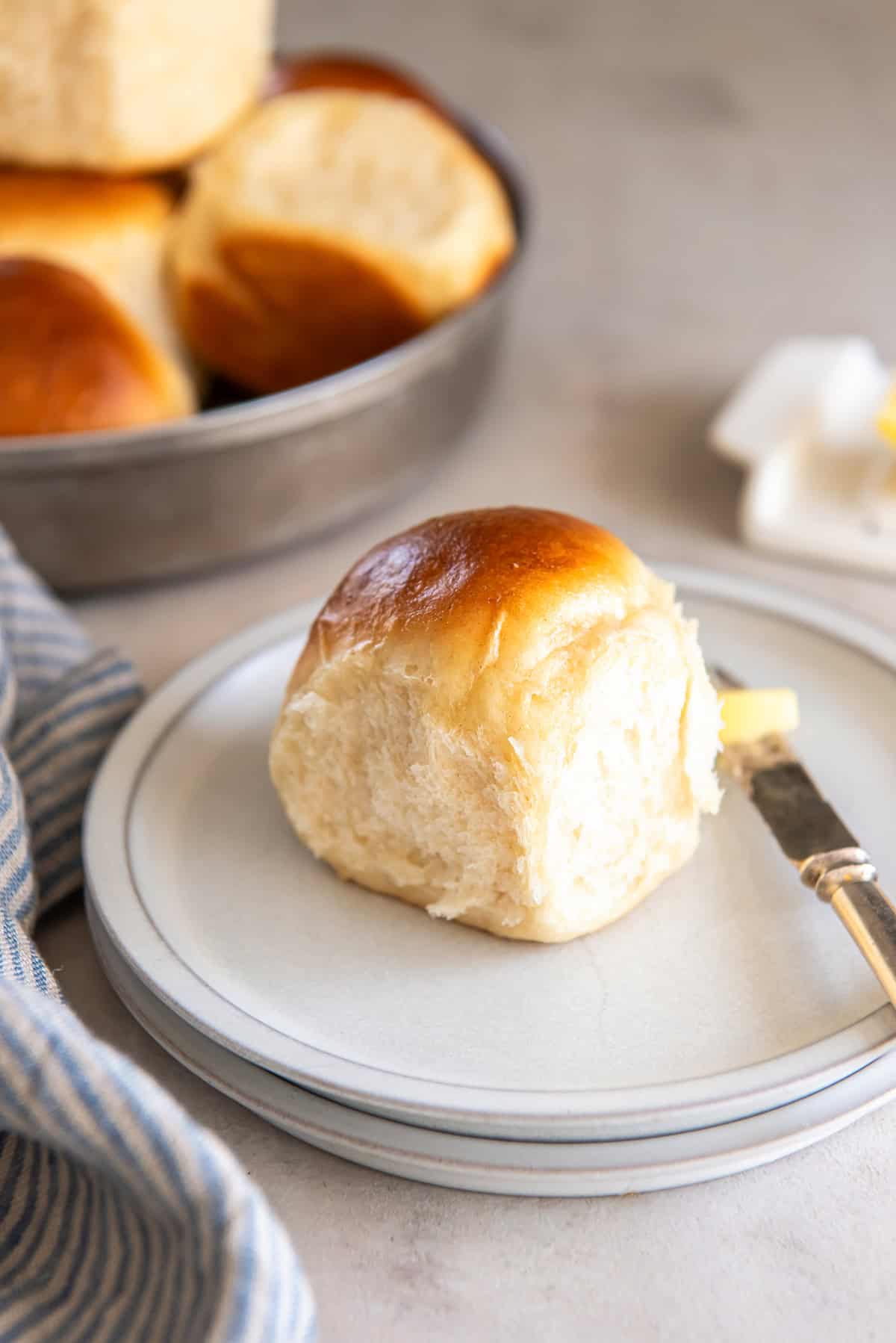
Ingredient Notes
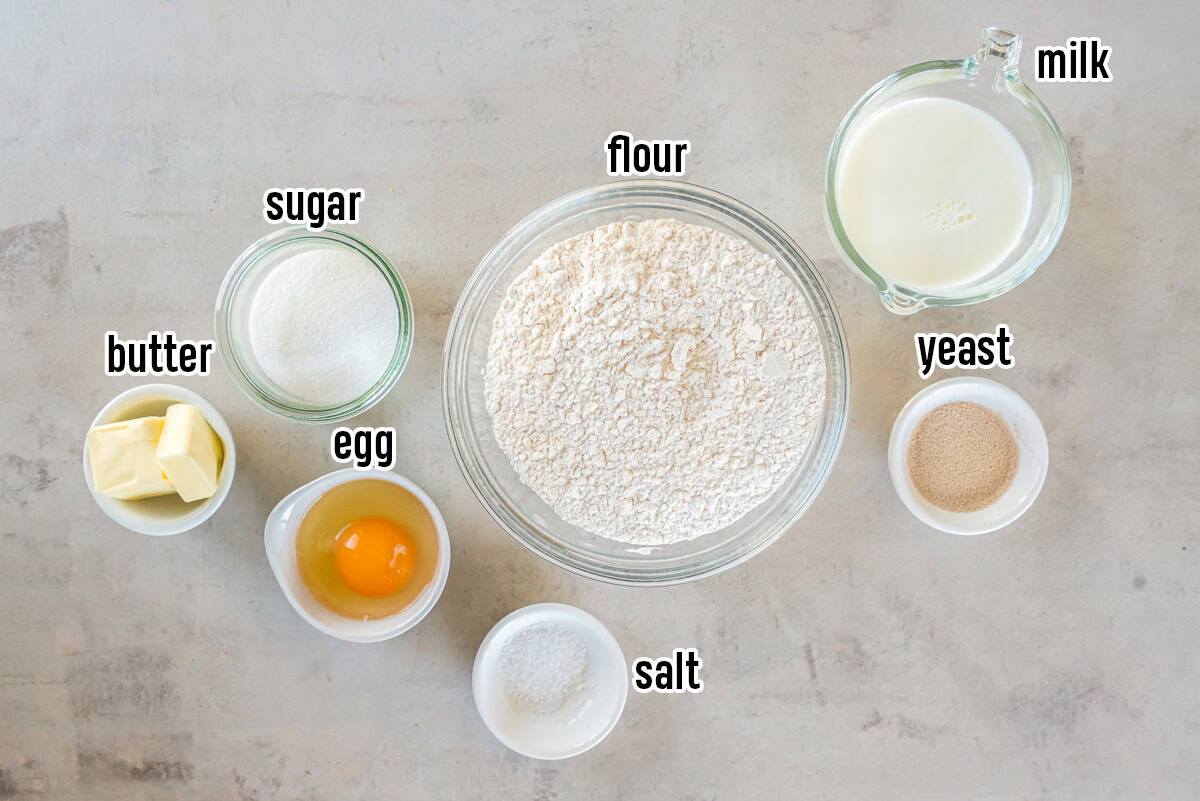
Flour: This recipe requires versatile flour, but the amounts may vary. See the step-by-step instructions and my tips below for all the details. Yeast: Make sure it is also sold as “Rapid Rise Yeast” by Fleischmann (there are one of them). Using instant yeast instead of active dry yeast reduces the time required for the dough to rise. Sugar: Don’t want to change the amount of granulated sugar in this recipe. He is responsible for several important things, such as helping to activate yeast, supporting gorgeous golden brown colours, and balancing flavors. Butter and Eggs: The dough is rich with melted salted butter and beaten eggs. Salt: Sugar feeds yeast, while a small amount of salt helps fine-tune the rise, flavor and texture of the dough.

How to make a simple dinner roll
Here’s a quick overview of how to create this recipe. The recipe card at the end of this post has detailed instructions.
Start the fabric
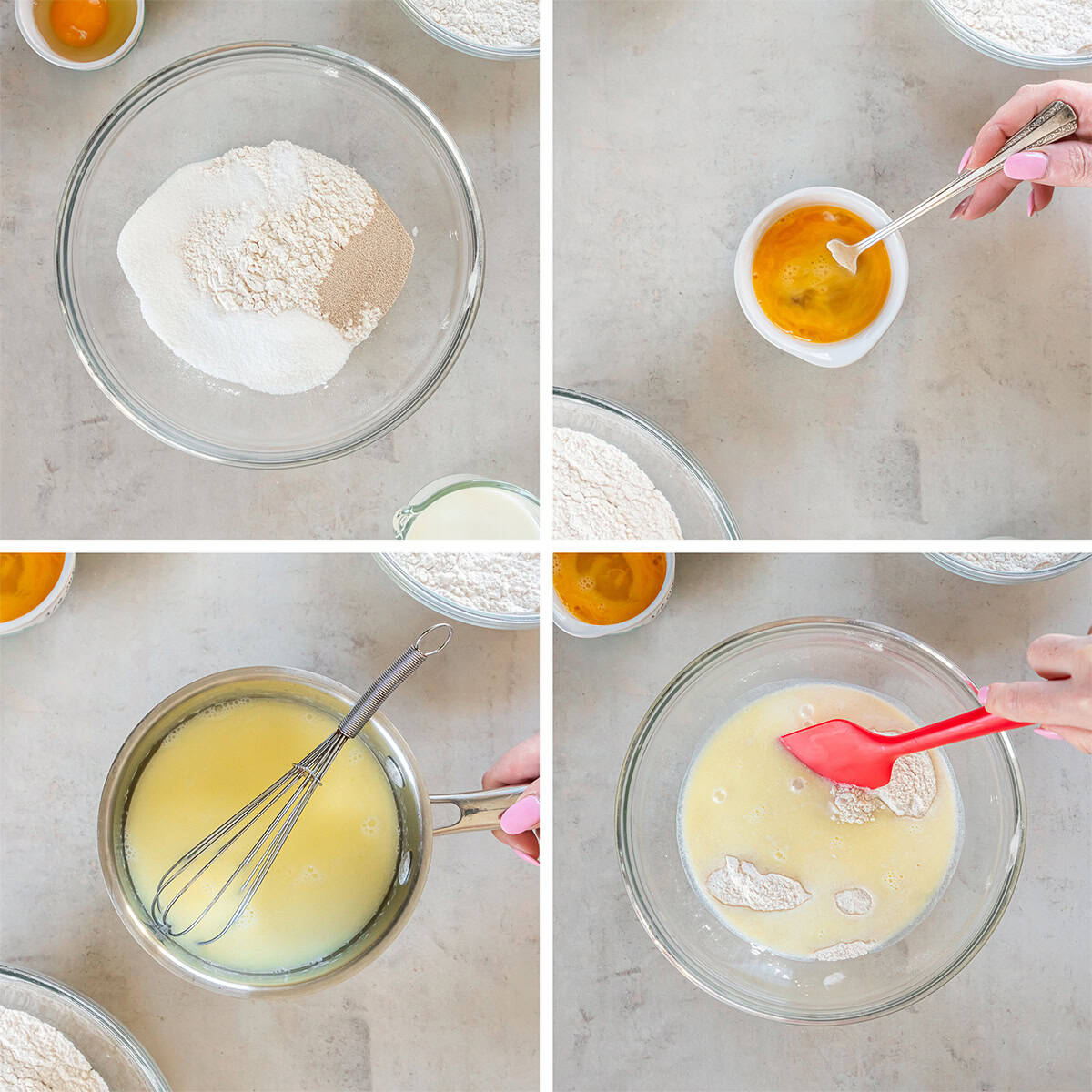
In a large bowl, mix 1 tablespoon of flour with sugar, yeast and salt and set aside. Broke the eggs in another small bowl, tap them with a fork and set aside. Melt the butter in a small pot. Add milk and warm within 1 minute. Until it reaches 120 to 130 degrees F.. It quickly reaches this temperature. If it exceeds that, remove the pan from the heat and let it rest to cool down to the temperature range. Add the milk mixture to the dry ingredients and stir until well mixed.
Finish the fabric and let it rest
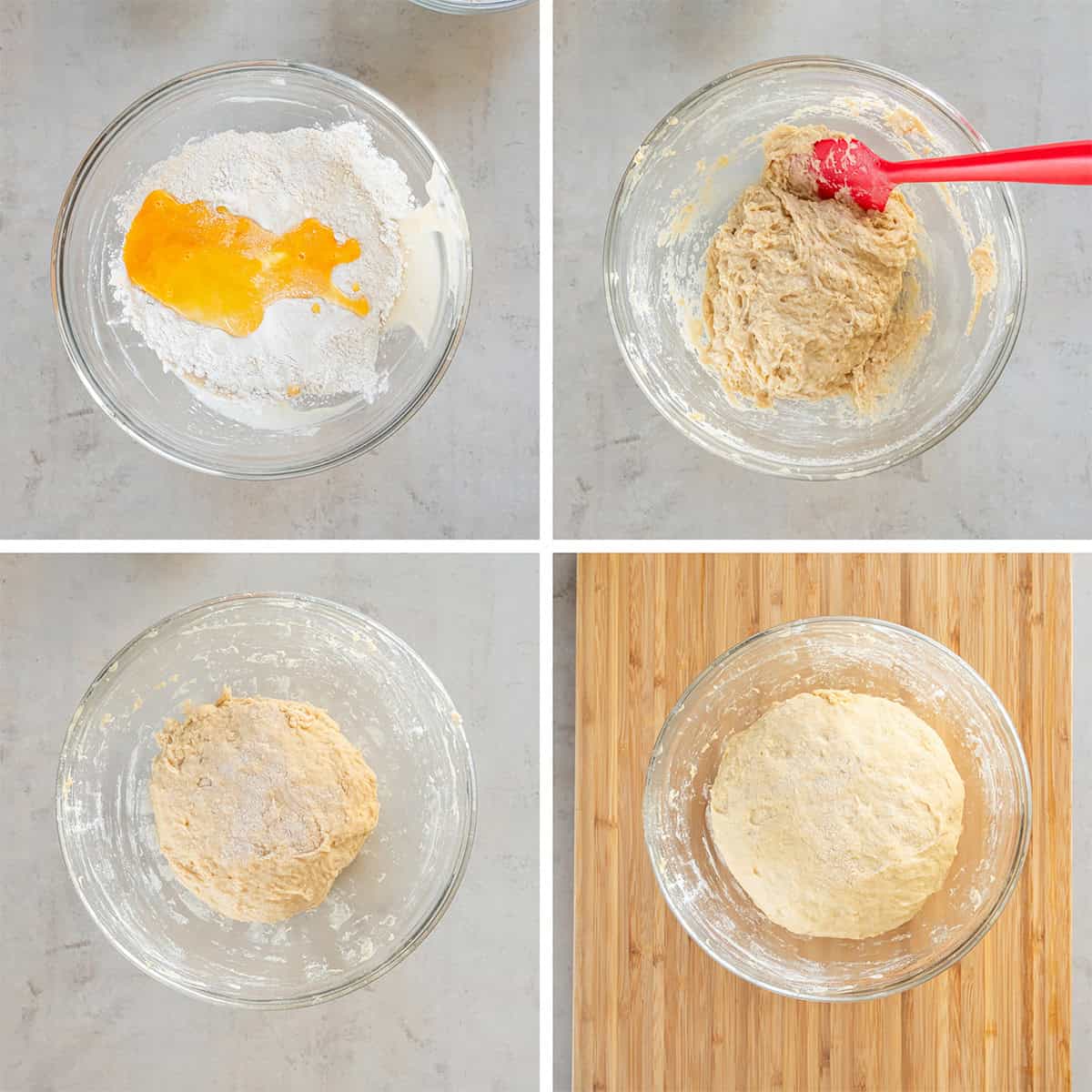
Sprinkle ½ cup flour over the dough and add beaten eggs. Stir again, add the remaining flour slowly if necessary, until it becomes a soft, sticky dough. You may not need to use the whole amount of flour. If the dough is just beginning to hug it in the bowl and is still very sticky, apply your hands with flour, collect the dough and turn it into a neat bowl and return it to the bowl. Cover the bowl with a clean kitchen cloth and let the fabric rest in a warm place for about 30 minutes. The first ascent is about resting the dough. It will rise slightly, but probably less than twice as much.
How to form a roll
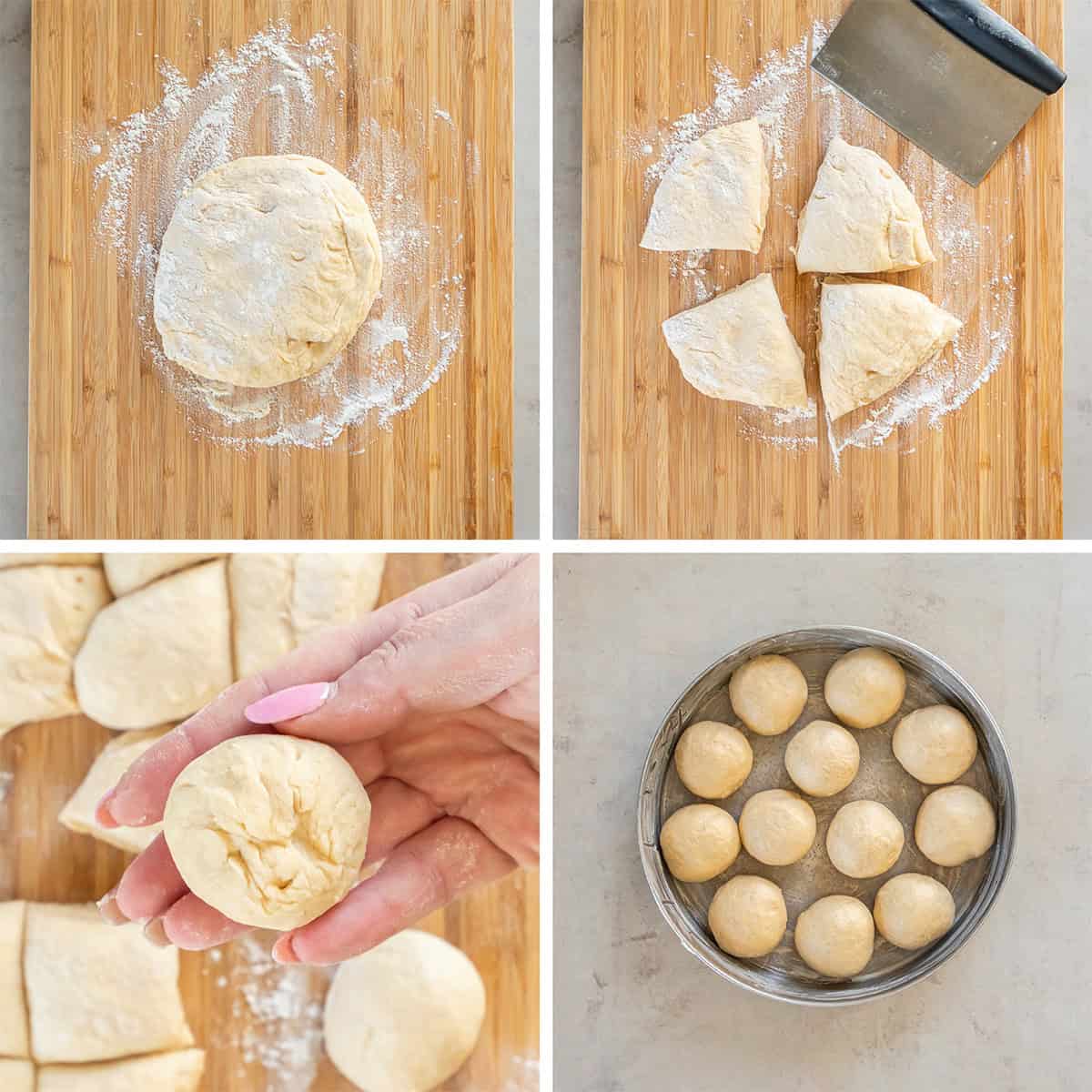
Place the dough on a lightly floured board. Using a bench scraper or a sharp knife, divide the dough into four equal parts. Then cut each piece into three equal pieces, cutting a total of 12 pieces. Pinch the edge and push it in to form a smooth ball (the pinch side of the roll is drawn above). Place the rolls in a circular pattern of greased 9-inch cake pans, place the pinched sides, leaving small space between each bowl.
Second time standing and baking
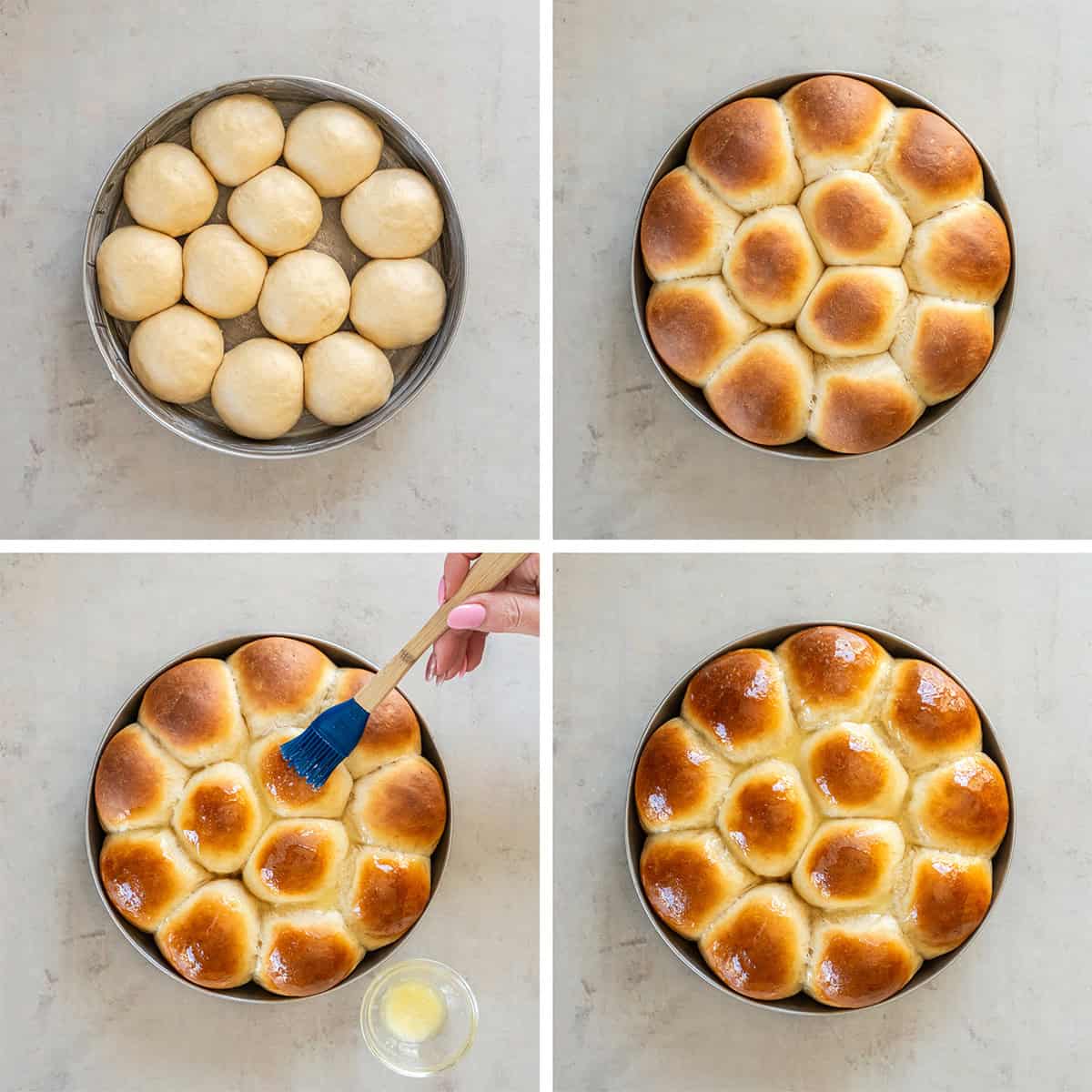
Cover the pot with a clean kitchen towel and allow the dough to rise again for another 30 minutes. After this second ascent, the dough balls rise and touch enough to fill the space between them. Transfer the pan to a preheated oven and bake for 12-14 minutes or until golden brown. Remove the roll from the oven and immediately polish the top with melted butter. They are served warmly and spread along with soft butter. Heaven!
Best dinner roll tips
Prove or not: Technically, instantaneous yeast does not require proofreading, but this recipe includes simple steps to ensure that the roll rises properly. A liquid wormmed is added directly to the dry mixture at 120-130 degrees F to activate the yeast and kickstart the fermentation process. Although this is not a traditional proofreading method (the yeast dissolves in the liquid first), warm milk still allows the yeast to be activated when it is mixed into the dough.
Break time and rise time: Most non-dough recipes tell you to raise the dough from at least 2 to 12 hours. The extended rise time replaces the physical action of kneading, allowing the dough to achieve the soft, fluffy texture that we all strive for. However, this recipe shows that you need to let the dough rest for just 30 minutes and then shape it into a roll, then another 30-45 minutes later.
Even rolls of size: I would like to keep the rolls as close as possible and bake evenly. The bench scaper technique for splitting the fabric above is the best way to do this. If one roll feels heavier than the other rolls when rolled, you can shift a little and add it to one or more of the other rolls.
Shaping dinner roll: For round rolls with smooth tops, use the “pinch and tuck” method. Take each dough, shape it into a bowl, pinch and pull down the edge of the dough, then push it under the bottom of the bowl. Place them on the seams or pinched sides to make the tops look smooth and neat.
Browning and Butter: Check the rolls towards the end of baking time and lightly tent with a sheet of foil on top if they are burnt more than you would prefer. It is not recommended to brush with butter until the baking time is over. This is because it promotes deeper browning here. Once they come out of the oven, lightly polish them with butter for their lovely, shiny finish.
Make-ahead instructions
If you want to get the majority of your work a day in advance, follow the instructions below.
It continues by following the recipe as directed, rolling the dough and placing it on the bread. Cover the bread with a sheet of plastic wrap and refrigerate the rolls overnight. The next day, on the day you are ready to bake them, remove the pan from the fridge and let it rest at the kitchen counter for about 30-45 minutes and allow it to cool. Then simply bake as directed in the recipe.
Storage and reheating tips
Room Temperature: Available in airtight containers or zippered plastic storage bags for up to 3 days at room temperature.
Freeze: If you have more rolls than you can eat, freeze them! Wrap each roll tightly in plastic wrap, place in a safe bag in the freezer, and freeze for up to 3 months.
Reheat: To bring them back to life, warm the oven in a 350°F oven for 5 minutes or until heated. You can also microwave it for about 15-20 seconds.
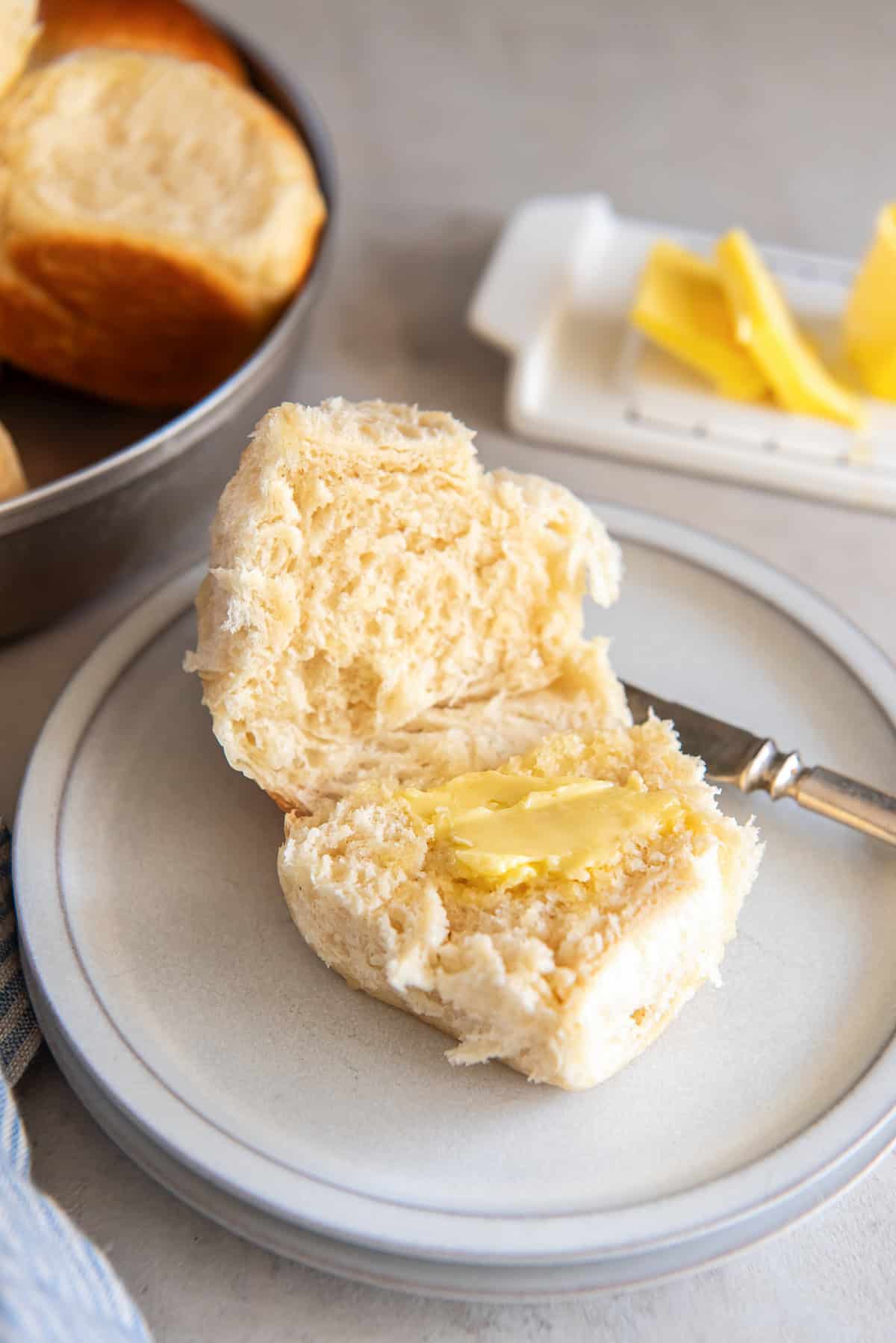
Sign up for our free newsletter of all the latest recipes and join FacebookInstagram and pinterest For more cooking inspiration!
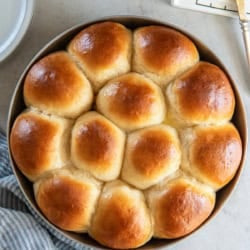
A simple dinner roll
These simple dinner rolls bake golden brown with an incredibly soft and fluffy texture. No mixer is required, and this complete yeast roll recipe does not require kneading.
Serving: 12 roll
1x2x3x
Instructions
In a large bowl, mix 1 tablespoon of flour, sugar, yeast and salt. Please put it aside.
Broke the egg into another small bowl and lightly tap it with a fork. Please put it aside.
In a small pot, melt 2 tablespoons of butter over low heat. Add milk and warm within 1 minute. Until it reaches 120 to 130 degrees F. It quickly reaches this temperature. If it exceeds that, remove the pan from the heat and let it rest to cool down to the temperature range. Add the dried ingredients and stir with a wooden spoon or rubber spatula.
Sprinkle ½ cup flour over the dough and add beaten eggs. Mix again until combined. Then add the remaining flour as needed, gradually and stir between each addition until a soft, sticky dough is formed. You may not need to use the whole amount of flour. When the dough is just beginning to hug the bowl and is still very sticky, apply your hands with flour, gather the dough, and rub the sticky dough off the bottom and sides of the bowl. Use your hands to form it into a neat bowl and return it to the bowl.
Rest the dough/Rise first
Shape the roll
Coat the 9-inch round cake pan with soft butter or non-stick cooking spray.
Using a bench scraper or a sharp knife, divide the dough into four equal parts. Next, put each piece together three equal pieces to a total of 12 pieces. Keep the size as evenly as possible. Shape them into smooth balls. Place them in a circular pattern in a greased pan (9 around the outer edge, 3 in the center) leaving a small space between each bowl.
Second ascent
Cover the pot with a kitchen cloth and allow the dough to rise again for another 30 minutes. After this second ascent, the dough balls rise and touch well to fill the space between them.
bake
Preheat the oven to 375°F while the roll is rising.
Transfer the pan to a preheated oven and bake for 12-14 minutes or until golden brown. If the roll is too brown, simply lightly tent with a sheet of foil. Melt the remaining tablespoon of butter while baking. Remove the roll from the oven and immediately polish the top with melted butter. Enjoy warmly.
nutrition
Serving: 1 roll ・ calorie: 151 kcal ・ carbohydrates: twenty five g ・ protein: 4 g ・ fat: 4 g ・ Saturated fat: 2 g ・ Polyunsaturated fat: 0.3 g ・ January Saturated Fat: 1 g ・ Trans Fat: 0.1 g ・ cholesterol: twenty four mg ・ sodium: 133 mg ・ potassium: 61 mg ・ fiber: 1 g ・ sugar: 5 g ・ Vitamin A: 125 iu ・ Vitamin C: 0.03 mg ・ calcium: twenty five mg ・ iron: 1 mg
Nutrition information is automatically calculated using common ingredients and is an estimate rather than a guarantee. See the home ingredients label for more accurate results.


